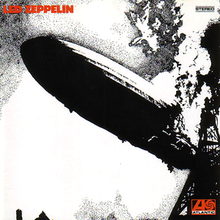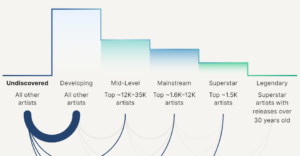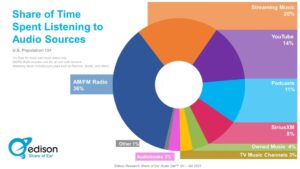Digital curation of rock n roll music
4 min read
The transition from the industrial to post industrial society, affected all the light and heavy industries in a tremendous level because the changing thought patterns created a new economy based on the knowledge. The transformation of an industrial society to a post industrial is characterized by the fact that the new economy progresses from an economy based on manufactures products, to an economy based on virtual products, finance, services and the power of information. Entertainment products, such as music albums, were transformed into digital files that the consumer accesses through a digital library or by downloading them. The digitalization of the music culture is an important thing because it transfers the cultural knowledge to future generations for a long time period. However, does the transformation of an analog recording into a digital MP3 file, reflect the digital culture? A plain MP3 file cannot save the rock n roll myth and album sales of course, because it does not include the representation information that will affect the consumer’s curiosity level to buy more music.
While digital transformation seems such an amazing “present” from the technology provider to the consumers that want to maintain their music taste in a long term, it raises some important questions. For instance, most of the rock n roll bands have been known for the great artwork in their vinyl albums or for wild stories about trashing hotels, throwing TVs from the windows and other notable experiences. The rock n roll myth and the sales of the albums are based on facts that have to do more with the external environment of the bands than the musicians and their music. So, the 1 million dollars question here is how a digital packet of 13 files can reflect the myth of the album Led Zeppelin (Release Year, 1969) by Led Zeppelin? How a 18 year old music fan can understand the efficiency of the band unless he knows that this successful album was recorded on the budget of £1,782 and Jimmy Page (guitarist) was the first person that used the famous “distance equals depth” recording technique?
In this case, there is a need to transfer the whole music culture to the new generation and not just the music, we need digital preservation. Preservation refers to the act of maintaining information independently understandable by a designated community. The digital preservation is a way to maintain the information in digital format and create digital objects with specific properties.
The digital preservation of a music album may be implemented for historical or legal reasons, for instance the contract with the artist may define the time period that the album will be available to the public. On Open Archival Information System (OAIS) level, the producer is usually the label and the artist (as a legal corporation), the management is implemented by an online company such as Spotify and the consumer is the music fan that accesses or downloads the online tracks.
The digital preservation of music in terms of OAIS depends on the format and the way you access the information. For example, the image of the CD’s cover may be considered a simple digital object but an image with an QRC weblink is a composite object. The MP3 of the Led Zeppelin track “Communication Breakdown” is considered a static digital object because there is an unchanged bit of sequences that represents the track. On the other hand, if the label of Led Zeppelin decides to re-release the track with a new remix then we consider that MP3 as a dynamic digital object.
The main threats of the digital curation of music include several causes such as lack of finance at the labels. There are music labels that were forced to release vinyl albums in limited edition and these titles are super rare today. The result is that the original recording does not exist anywhere and there is no source for the reproduction of the title in digital format.
Human error is another serious threat for the digital curation of music. I am aware of many stories about Scandinavian music producers that lost the studio recording files that were destroyed because a bottle of whisky dropped on the laptop!
The lack of the appropriate metadata, might be a threat to the ability of an information asset for becoming Independently Understandable. For instance when the producer creates a digital transformation of an album by the artist Warlord, then the lack of metadata might confuse the consumer. There are two artists named as “Warlord”, a hip hop artist and a heavy metal group. The lack of the appropriate metadata will not be able to be interpreted by the designated community (music fans) because they have to search other resources to understand who the real artist is.
Authored by Billy Yfantis
Image License: Creative Content


